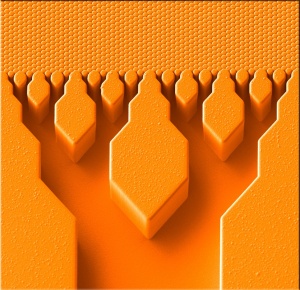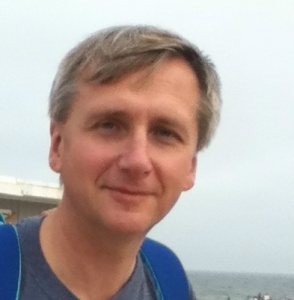When: October 23, 4 pm
What: Extending CMOS with Nanofluidics
Where: Moscow School of Management, Beijing-1 Auditorium – China cluster
Guest Speaker: Dr. Stanislav Polonsky has 15 years of experience in the semiconductor industry, including electrical test, failure analysis, digital and analog circuit design, and CAD tools development. During the last 7 years he was actively working on extending mainstream silicon technology with nanopores and nanofluidics.
2014-present: Director of Samsung Advanced Institute of Technology, Russia.
1998-2014: Research Staff Member at IBM T.J. Watson Research Center, USA.
1993-1993: Research Scientist at State University of New York at Stony Brook, USA.
1993: PH.D. in Device Physics, Moscow State University, Russia.
Abstract: Extending mainstream Complementary Metal Oxide Semiconductor (CMOS) microelectronic technology with new capabilities becomes an important trend as semiconductor device scaling nears its end. Micro Electro-Mechanical Systems (MEMS), spintronics (e.g. magnetic tunnel junctions), and silicon photonics are well-known examples of such extensions. There is an increasing interest from semiconductor companies to apply their core micro- and nanofabrication capabilities to nanobiotechnology, a good example being extending CMOS with a capability to manipulate and sense biomolecules. Continuous progress in this area will lead to point-of-care, home-use, and wearable medical devices, which will revolutionize the medicine and improve our health. In this lecture I am reviewing IBM’s progress in single molecule sensing and manipulation using solid-state nanodevices, emphasizing their compatibility with CMOS:
I. DNA Transistor is a nanopore drilled through a stack of multiple electrically addressable metal electrodes and dielectric layers. I start with a theoretical description of the device, supported by all-atom molecular dynamics simulations. I describe our experimental effort and show that the device is electrically viable when the electrodes are separated by dielectric as thin as few nm. Organic coating inside the pore protects metal from erosion and prevents the sticking of DNA to the surface. I present data on DNA translocations and discuss some of the potential stumbling blocks of the DNA transistor design, as well as possible ways to overcome these difficulties.
II. CMOS-compatible nanochannels for stretching and translocating single DNA molecules. Similar to MEMS devices, sacrificial silicon nano-structures are etched with XeF2 to form nanochannels. Translocations of linearized DNA single molecules are imaged by fluorescence microscopy. Our method offers a manufacturable wafer-scale approach for CMOS-compatible biochip platforms and can immediately be applied to boost the throughput of next generation sequencing instruments.
III. Transient nanogap between two fluidic reservoirs allows stretching and manipulating a single DNA molecule. The operation of the device is based on the solvation energy change when an ion moves from water to air. Our experiment uses a nanopositioner to control the coupling of a nanopipette with the liquid surface. I present results on creating a transient nanogap, triggered by a translocation of double-stranded DNA, and measuring the probability to find the molecule near the tip of the nanopipette after closing the gap.
We are looking forward to seeing you.
If you like to participate and for further information or questions, please Liliya Abaimova
We look forward to seeing you.


